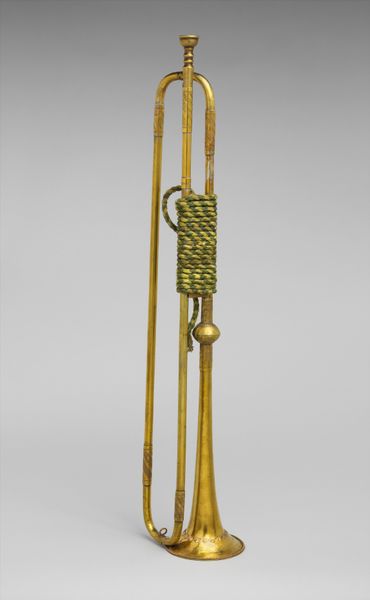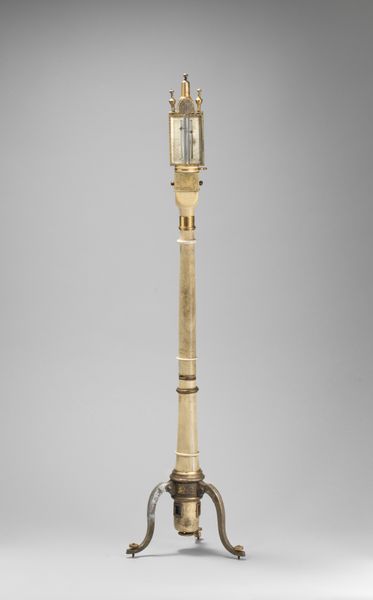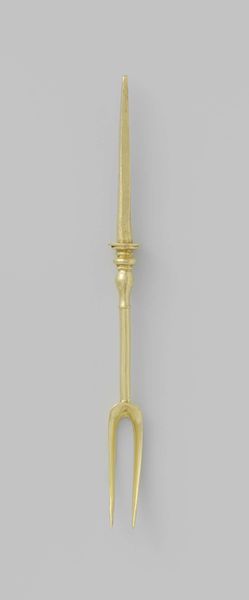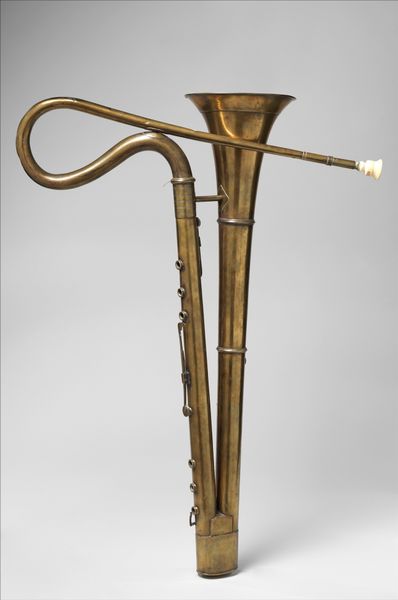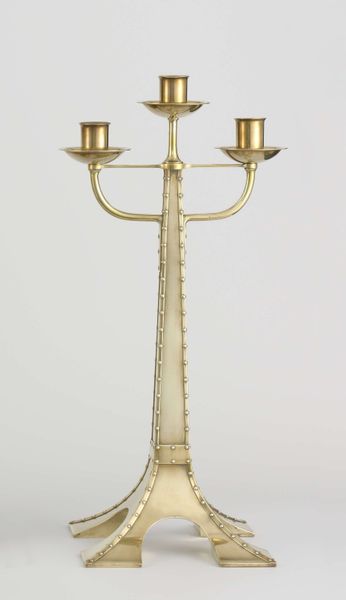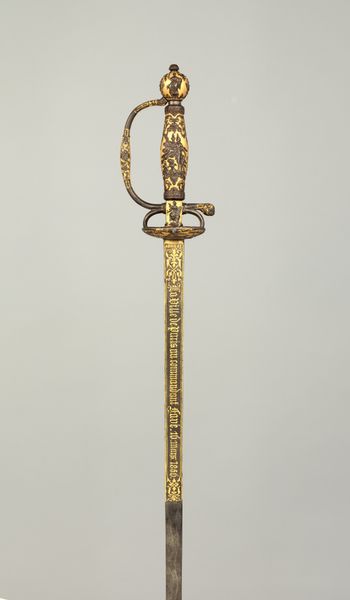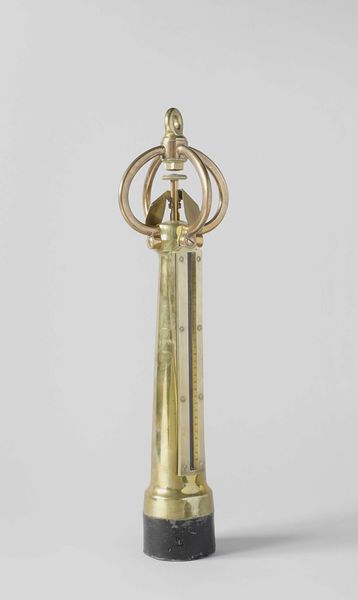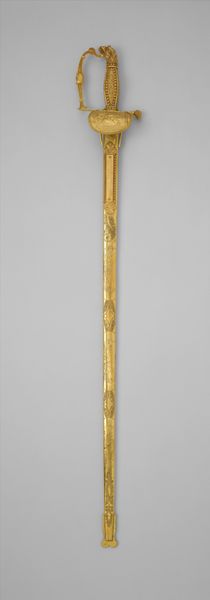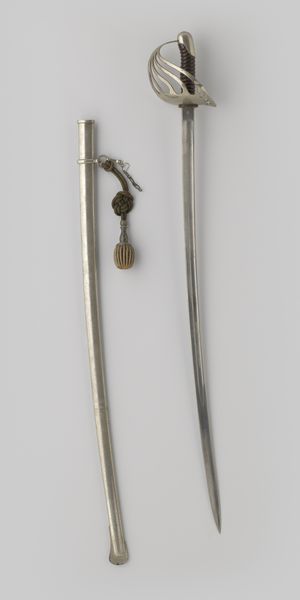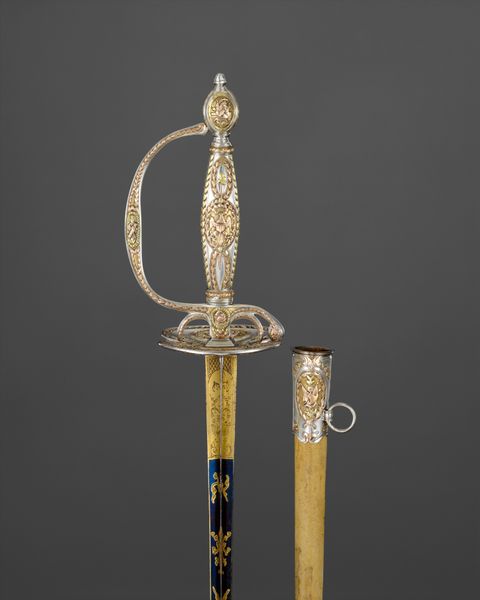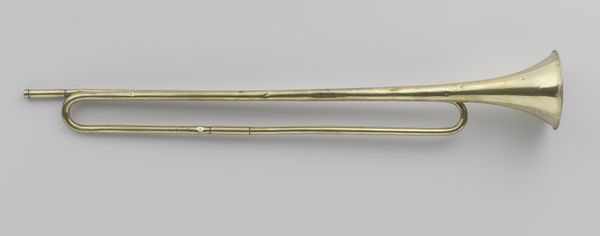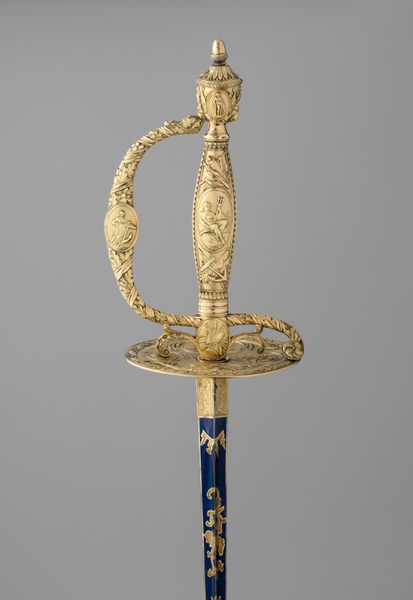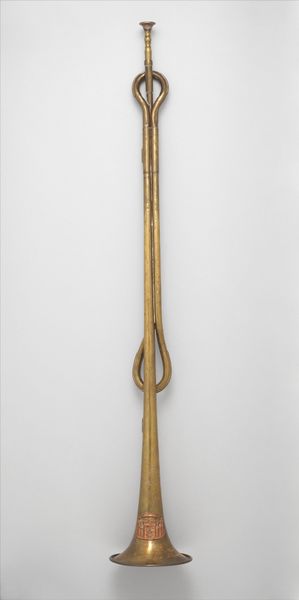
Dimensions: Height (Perpendicular to bell): 26 7/16 in. (67.2 cm) Diameter (Of bell): 4 5/8 in. (11.7 cm)
Copyright: Public Domain
Curator: The Metropolitan Museum of Art holds within its musical instrument collection this, an eighteenth-century Natural Trumpet in D. The maker's mark identifies the brass instrument as the work of Andreas Naeplaesnigg, dating it around 1790. Editor: Okay, first thought: regal fanfare! It gleams like sun-warmed honey. It’s tall, so impossibly… noble. Imagine it echoing in some gilded hall! Curator: Precisely. Understanding this trumpet necessitates viewing it as an instrument intimately intertwined with hierarchies of power and performance practice during its era. The baroque period, characterized by extravagance and elaborate ornamentation, wasn't just a musical style, it was a social and political one. Editor: The shape is so... direct, almost defiant. Is it me or do these things only ever get used in REALLY important historical moments. I’m instantly picturing powdered wigs and declarations! The slight imperfection gives it character. What could it possibly sound like today? Curator: It resonates because the trumpet's role during this time was to signify authority. Courts, militaries, and civic ceremonies relied on such instruments. Also, take notice of the materials; the bronze, the brass. Editor: Ah yes! The engravings swirling near the base. But can we just talk a bit more about the raw SOUND?! To my ears a fanfare isn't just an announcement—it’s also raw assertion, raw pride. Curator: Certainly. The historical associations surrounding ceremonial brass instruments connect directly to issues of gender, power, and access. Throughout Europe and the Americas access to particular instrument styles reflected wealth and gender. Instruments are cultural products that were accessible to few. Editor: Hmm. So if you blew THIS trumpet…it meant you’d ALREADY "made it"? It kind of reframes how I experience the glitz! This old thing carries SO MUCH heavy symbolic baggage along with it! Now I sort of pity the person required to play it. Curator: That very intersectional viewpoint frames art in the context of complex social realities, enriching our interpretations. Editor: Definitely! Thanks for tuning my ears... or is it widening my eyes? In any case: illuminating!
Comments
No comments
Be the first to comment and join the conversation on the ultimate creative platform.
